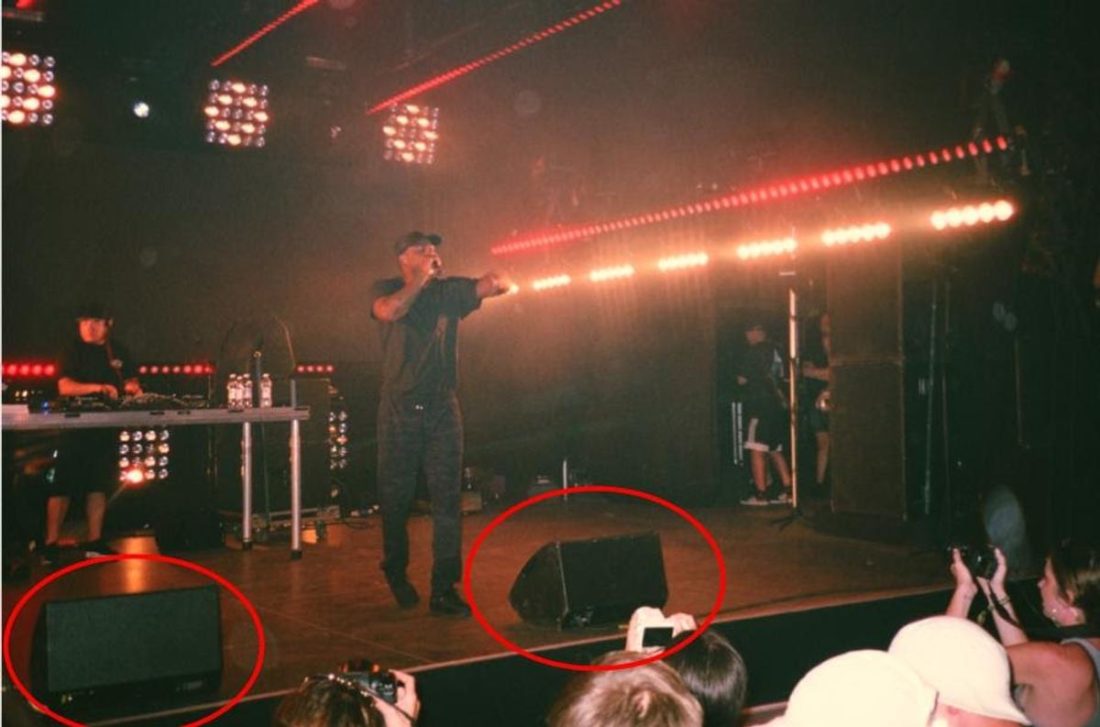As music lovers or aspiring musicians, you may have noticed that, aside from technical lighting and amazing stage setups, another constant thing in live or online concerts is the earpiece every singer and musician seems to wear. “What are they for?” you may wonder. Surely they’re not just for show? Problem is, if you’re an aspiring singer or musician, you may think you won’t need to get your own earpiece for performances. But, let us warn you: that would be a grave mistake. Aside from aesthetics, these earpieces have crucial functions that can make or break any performance. Lucky for you, we have all the answers to your questions about why singers or musicians wear earbuds when performing and what they hear in them, right here in this article. So read on!
Why Do Singers Wear Earpieces on Stage?
K-Pop fans will remember Red Velvet member Joy collapsing on stage in a 2016 concert, clutching her ear. The aftermath of an earpiece gone awry. Now, many are thinking, what prompted her to wear one in the first place? The fact is, there are a plethora of reasons to wear an earpiece on stage. Here are just a few:
For directions
From the layman’s perspective, it is really easy to think of a musical performance as a solo production. It is the singer’s show, after all. However, the reality of stage production is far different– with larger concerts requiring crews of 30-50 technicians. The result? The singer that has a lot more to think about than just singing and playing music. Outside directions can take several forms, such as:
Notes from stage directors and communication with pyrotechnicians. Receiving cues from the music director, such as song arrangements or the start of any prerecorded music. Listening to a click track (which works like a metronome in audio form) for tighter and more consistent performances.
For monitoring
Stage monitoring is the process by which performers get real-time feedback about how they sound. It can also let them accurately hear the other performers sharing the stage with them, or a backing track to help them keep the tempo and tune. Without the ability to get proper monitoring, singers cannot notice and adjust their voice to the proper pitch and rhythm. Appropriate coordination with other singers also becomes impossible. All singers on a stage need their own monitoring system. This is especially true when several performers all sing at once, such as at a Red Velvet performance.
Speakers vs. in-ear monitors
Monitoring comes in two primary styles, speaker monitors and in-ear monitors. Speaker monitors (pictured on stage, above) are also called wedges due to their wedge-like shape. They were traditionally placed on the floor near the performer. However, amplified sounds coming from the wedge could enter the microphone. This would result in the horrible screeching/feedback synonymous with the amateur rock concerts of yore. Another downside of wedges is they effectively act as anchors for the performers on stage. Wedges have optimal angles for performers to hear them properly and leaving these zones can dramatically affect the performance. For larger stages, performers need a lot of them, which greatly increases cost. That’s why, today, most singers opt for in-ear monitors (IEMs) instead. IEMs allow for more complex movement around the stage. Instead of having monitors in a static position like in the case of wedges, singers get to wear the IEMs so they follow their every move – and greatly reduce feedback sound.
For hearing protection
Decibels (abbreviated “dB”) are the way we measure sound; the higher the louder. Health experts will quickly point out that rock concerts are about 120 dB, but being exposed to anything over 85 dB will begin to damage your ears. For musicians, great hearing protection is essential to protect their way of life. Since IEMs go directly into the ear canal, they offer earplug-like protection from the outside. These protect performers from being exposed to loud band sounds and shouts from the crowd. On the inside, however, they allow the performer to hear what the mic is picking up at a safe and comfortable level. The performers (or their tech team) get to control how loud the IEMs’ volume is and limit it to the safe listening standard Lastly, as mentioned above, IEMs can prevent feedback sounds – which can also damage your ears if it becomes too loud.
What Kind of Earpieces Do Singers Wear?
By now you may have realized that the earpieces we talk about singers wearing are, in most cases, IEMs. If you look closely, you’ll also notice that they go around the ear to help singers comfortably include dancing and poppy movements in their acts. Examples of earpieces for singers go from the entry-level KZ ASX to the much better SeeAudio Yume. Both of which are wired IEMs, though. This is because wired IEMs come standard as they work with any sound system – no extra accessories required. The main decision, then, for purchasers of IEMs is if they want generic or custom-fit IEMs:
Universal IEMs
Universal, or ‘generic’, IEMs are a one-size-fits-all deal. As you might expect, they’re typically cheaper. It is also worth noting they come with a variety of different tips, featuring several shapes and sizes. You’ll likely be able to get something that fits your ear comfortably, just not perfectly. However, this lack of a perfect fit will also impact sound isolation, so be careful. Generic IEMs are perfectly fine for the casual consumer and amateur performers, who are on a budget.
Custom-fit IEMs
Naturally, custom-fit IEMs are going to fit your ear canal more snuggly and have greater sound isolation. They do take some work on your end – you’ll need to get ear impressions done. After getting your impressions done, it might also take a long time for the custom-made IEMs to be made. Lastly, it should be noted that custom-fit products are generally harder to return than other products. Custom-fit IEMs are made for one pair of ears and may also include band-specific logos and markups. This can make them hard to resell to others. As a result, it is a good idea to double-check return policies before making a purchase. Custom-fit IEMs are perfect for the professionals and those that perform on stage a lot to make a living.
Disadvantages of Using Earpieces When Performing
While we sometimes see singers cover one ear to hear their earpiece better, you’ll also often see the opposite: A singer taking out their earpiece. The fact is, despite how good in-ear monitoring can be for singers, they do have some disadvantages:
Prevents being with the audience
The importance, and difficulty, of truly connecting with the audience is hard to describe. It must be described by a performer’s mouth. This feeling of connectivity is obviously difficult to genuinely cultivate. When artists have their ears clogged by IEMs, they can’t hear the audience members right in front of them. What’s worse is that bright stage lights shining in their eyes may also make it difficult to see the audience, too! This breaks off the feeling of actually playing live. By taking out their IEMs, they can reclaim the feeling of playing to an audience. There are workarounds that can capture the best of both worlds, though. One of these is a microphone technique called ambient miking. This technique allows the ambient sounds (such as audience chatter and reactions) to get through to the singer’s earpiece. However, this isn’t usually available, especially in basic setups. It requires that the microphone be placed in such a way that the room’s ambient sounds are more prominent in the receiving mic than the direct sound of the music. As a result, it requires a high-capacity venue and special setup.
Susceptible to audio malfunctions
Audio malfunctions in earpieces aren’t exactly common, but they can bring a show to a screeching halt. In extreme cases, like the K-Pop example at the top, a performer might even collapse.
Additional expense
As mentioned in our custom-fit IEMs section, getting quality IEMs can take quite a bit of time and money. However, even if the group is playing softer music with a series of performers taking the stage, they still need to have individual pairs. As it so turns out, the common practice of sharing earbuds and IEMs isn’t advisable despite the practicality. Ears have germs and bacteria in them that can cause ear infections. Sharing earbuds and IEMs is more akin to sharing a toothbrush than the average user realizes. The last expense is that performers who also record will need different earpieces. In this case, studio monitoring headphones are recommended. These allow the singer to hear the recording as close as possible as to how it will sound on the record. All without the risk of any sound bleeds. So, every performer must consider the costs of having both their own studio monitoring headphones and IEMs.
Conclusion
Now, you’ve got the answers to all of those behind-the-scenes stage performance questions. The next time someone asks, “Why do singers wear earpieces?” in your vicinity, you’re ready for a full conversation. As always, we want to hear your story. Are you a performer? What kind of things do you hear in your earpiece? Are there special tricks your band has to make wedges work for you? Maybe you get a lot of feedback noise, but you like the nostalgic feel. Let us know in the comments below!



